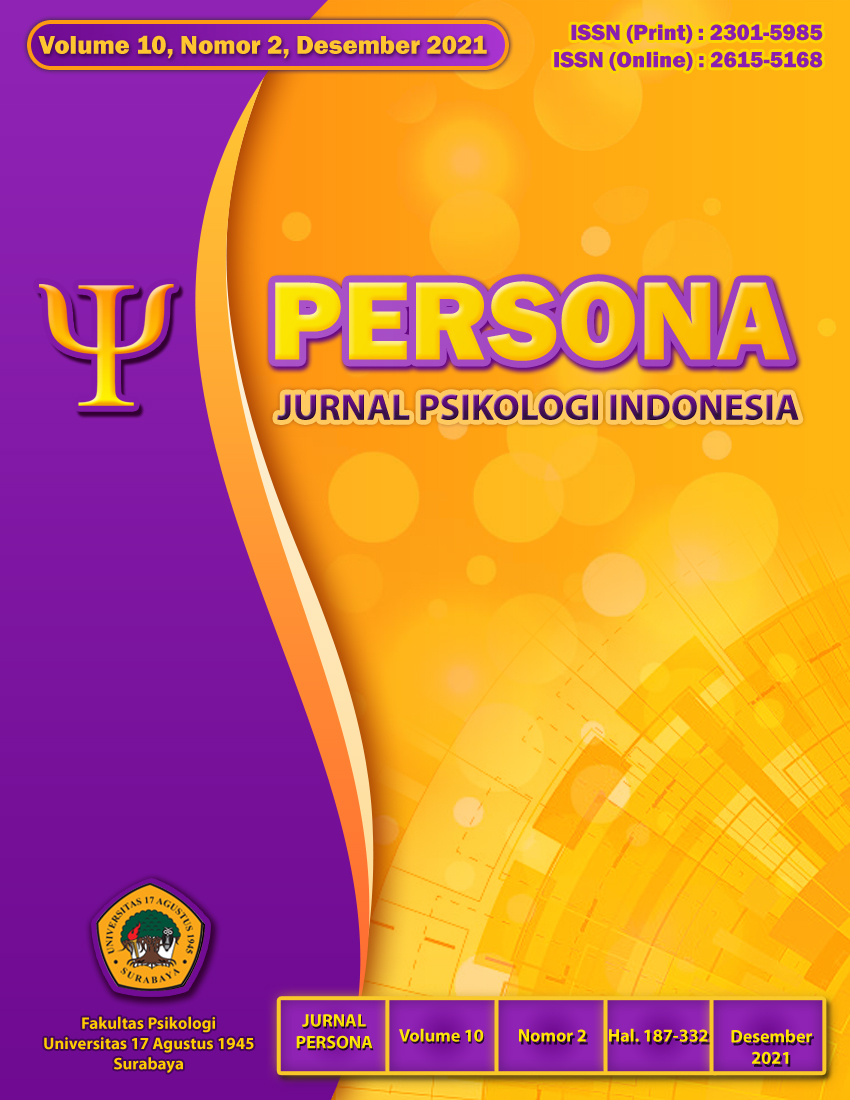Analisis Rasch Model Indonesia the International Personality Item Pool-Big Five Factor Markers (IPIP-BFM-50)
DOI:
https://doi.org/10.30996/persona.v10i2.5552Keywords:
: IPIP-BFM-50, Personality, Rasch ModelAbstract
Abstract
Various studies have been conducted to determine human personality, then there are various theories and personality scales. IPIP-BFM-50 is open source and has been used around the world. The aims of this research is to validate IPIP-BFM-50 with rasch model. The sample used was 359 students from University of Surabaya, with an age range 17-23 years. This research used simple random sampling. The outfit-infit statistic results vary from 0.5-1.5 (except C-28), person-item reliability is above 0.7, the passable dimesionality measure.. There are several items that indicate bias based on DIF measurement: EM-44, EM-14, EM-29, EM-9, E-6, E41, C-38, A-32, and I-30. There are some items on the dimensions of emotional stability, extraversion, conscientiousness, agreeableness, and intellect with less varied levels of DIFficulty. Researche proposed choice to rework this instrument in the terms for fixed its item bias and wider its variability (DIFfuculties hierarchy). This studies also implies on similar studies to use both CTT and rasch model simultaneously for gain richer psychometrics information.
Keywords: IPIP-BFM-50; Personality; Rasch Model
Abstrak
Berbagai penelitian telah dilakukan untuk mengetahui kepribadian manusia, yang kemudian muncul berbagai teori dan alat ukur kepribadian. IPIP-BFM-50 merupakan salah satu alat ukur kepribadian open source dan telah banyak digunakan di seluruh dunia. Penelitian ini memiliki tujuan melengkapi studi validasi IPIP BFM-50 sebelumnya, dengan menggunakan rasch model . Sampel yang digunakan yaitu 359 mahasiswa Universitas Surabaya, dengan usia 17-23 tahun. Pengambilan sampel dilakukan dengan teknik simple random sampling. Diperoleh hasil outfit-infit seluruh butir yang bervariasi pada 0.5 – 1.5 (kecuali C-28), reliabilitas person-item pada semua dimensi dari alat ukur ini diatas 0.7, hasil uji dimensionalitas yang cukup memuaskan. Terdapat beberapa butir yang terindikasi bias yaitu butir EM-44, EM-14, EM-29, EM-9, E-6, E41, C-38, A-32, dan I-30. Beberapa butir pada dimensi emotional stability, extraversion, dan conscientiousness, agreeableness, dan intellect memiliki tingkat kesulitannya kurang bervariasi. Peneliti menyarankan untuk melakukan revisi dari instrumen ini apabila berkeinginan untuk memperbaiki butir yang diindikasi mengalami bias dan memperluas variasi tingkat kesulitan butir. Studi ini juga berimplimkasi pada studi serupa berikutnya terkait validasi dan adaptasi untuk menggunakan kedua paradigma CTT dan rasch model sehingga mendapatkan informasi psikometris yang lebih banyak dan sempurna.
Kata kunci: IPIP-BFM-50; Kepribadian; Rasch Model
Downloads
Downloads
Published
Issue
Section
License
The author who will publish the manuscript at Persona: Jurnal Psikologi Indonesia, agree to the following terms:
1. Authors retain copyright and grant the journal right of first publication with the work simultaneously licensed under a Creative Commons Attribution ShareAlike License that allows others to share the work with an acknowledgment of the work's authorship and initial publication in this journal.
2. Authors are able to enter into separate, additional contractual arrangements for the non-exclusive distribution of the journal's published version of the work (e.g., post it to an institutional repository or publish it in a book), with an acknowledgment of its initial publication in this journal.
3. Authors are permitted and encouraged to post their work online (e.g., in institutional repositories, pre-prints sites or on their website) prior to and during the submission process, as it can lead to productive exchanges, as well as earlier and greater dissemination of published work






